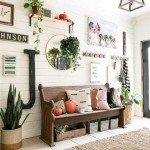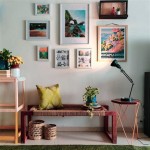3D Printed Home Decor: Personalization and Sustainability Redefined
Additive manufacturing, commonly known as 3D printing, is rapidly transforming various industries, and home decor is no exception. This technology allows for the creation of customized, intricate, and sustainable decorative items, offering a departure from mass-produced, standardized products. The ability to design and manufacture objects digitally opens up possibilities for personalization and innovation, while also addressing environmental concerns associated with traditional manufacturing processes.
The core principle of 3D printing in home decor involves constructing three-dimensional objects layer by layer from a digital design. This process typically employs materials such as plastics, resins, ceramics, and even metals, depending on the desired aesthetic, functionality, and durability of the final product. The digital design, often created using Computer-Aided Design (CAD) software, guides the printer in depositing the material in precise patterns, gradually building the object from the bottom up.
The integration of 3D printing into home decor manifests in several key areas, ranging from small-scale decorative items to larger architectural elements. This article examines the potential of 3D printing in revolutionizing home decor, highlighting its benefits, limitations, and future trends within the industry.
Unprecedented Personalization and Customization
One of the most compelling advantages of 3D printing in home decor is the unparalleled level of personalization it offers. Consumers are no longer limited to selecting from pre-designed items; instead, they can actively participate in the design process, creating unique pieces that reflect their individual tastes and preferences. This level of customization extends to various aspects of the design, including size, shape, color, texture, and even incorporated patterns.
For example, consider a homeowner who desires a vase with a specific pattern to complement their existing decor. Using 3D printing, they can either design the vase themselves or collaborate with a designer to create a bespoke piece that perfectly matches their style. The design can be precisely tailored to fit the available space, ensuring a seamless integration into the home environment. This level of personalization is virtually impossible to achieve through traditional manufacturing methods without incurring significant costs and lead times.
Furthermore, 3D printing enables the creation of personalized gifts and commemorative items. Imagine designing a custom photo frame with embedded names, dates, or meaningful symbols. Such personalized items hold significant sentimental value and offer a unique alternative to generic, mass-produced gifts. The ability to create these unique items on demand makes 3D printing an attractive option for personalized gifting.
The possibilities for customization extend beyond aesthetics. 3D printing can also be used to create functional home decor items that are tailored to specific needs. For example, someone with limited storage space might design custom shelves or organizers that maximize the use of available space. For individuals with mobility challenges, custom-designed assistive devices like ergonomic handles or adaptive lighting fixtures can be created to enhance their comfort and independence within their homes.
The accessibility of 3D printing technology is also increasing, with more affordable desktop printers becoming available for home use. This allows individuals to experiment with different designs and materials, further fostering creativity and innovation in home decor. Online marketplaces are also emerging, connecting designers and consumers, enabling the seamless exchange of digital designs and 3D printing services. This interconnected ecosystem is democratizing access to personalized home decor, empowering individuals to express their unique style and create truly customized living spaces.
Sustainable and Environmentally Conscious Production
Beyond personalization, 3D printing offers significant advantages in terms of sustainability and environmental impact. Traditional manufacturing processes often involve significant waste generation, energy consumption, and transportation costs. 3D printing, on the other hand, can significantly reduce these environmental burdens through several key mechanisms.
Firstly, 3D printing employs an additive manufacturing process, meaning that material is added only where it is needed, minimizing material waste. In contrast, subtractive manufacturing processes, such as milling or carving, often involve removing large amounts of material, resulting in significant scrap. This reduction in material waste translates directly to lower raw material consumption and reduced environmental impact.
Secondly, 3D printing allows for on-demand production, eliminating the need for large-scale inventories and associated storage and transportation costs. Traditional manufacturing often involves producing goods in bulk and shipping them to various distribution centers, contributing to carbon emissions and logistical complexities. With 3D printing, products can be manufactured closer to the point of consumption, reducing transportation distances and associated environmental impacts.
Thirdly, the materials used in 3D printing are increasingly sustainable. While plastics have been a dominant material in 3D printing, there is growing interest in bio-based and recycled materials. For example, filaments made from recycled plastic bottles or plant-based polymers are becoming increasingly available, offering a more environmentally friendly alternative to traditional plastics. The development and adoption of these sustainable materials are crucial for minimizing the environmental footprint of 3D printed home decor.
Moreover, 3D printing facilitates the creation of durable and long-lasting products. By using high-quality materials and optimizing designs for durability, 3D-printed home decor items can withstand wear and tear, extending their lifespan and reducing the need for frequent replacements. This longevity contributes to the overall sustainability of the product, minimizing its long-term environmental impact.
The potential for localized production is another key sustainability advantage of 3D printing. By establishing local 3D printing hubs, manufacturers can reduce transportation distances and support local economies. This localized production model also reduces the reliance on global supply chains, making the industry more resilient to disruptions and promoting economic sustainability. The combination of reduced waste, on-demand production, sustainable materials, and localized manufacturing makes 3D printing a compelling option for creating more environmentally responsible home decor.
Complex Geometries and Innovative Designs
The unique capabilities of 3D printing unlock new possibilities for complex geometries and innovative designs in home decor. Traditional manufacturing methods often struggle to produce intricate shapes and intricate details, limiting the design possibilities. 3D printing, on the other hand, can create objects with complex internal structures, intricate patterns, and organic shapes that are virtually impossible to achieve through conventional manufacturing.
This freedom in design allows for the creation of visually stunning and functionally innovative home decor items. For example, lampshades can be designed with intricate lattice structures that diffuse light in unique and captivating ways. Vases can be created with delicate filigree patterns that add a touch of elegance and sophistication. Wall art can be designed with complex interwoven designs that create a mesmerizing visual effect.
The ability to create complex internal structures also opens up possibilities for functional innovation. For example, planters can be designed with integrated drainage systems to prevent overwatering. Shelves can be created with optimized support structures that maximize load-bearing capacity. Acoustic panels can be designed with intricate internal geometries that enhance sound absorption and improve the acoustics of a room.
Furthermore, 3D printing facilitates the creation of parametric designs, where the shape and form of an object are determined by mathematical algorithms. This allows designers to create designs that adapt to specific parameters, such as the dimensions of a room or the amount of available light. Parametric design enables the creation of highly customized and optimized home decor items that seamlessly integrate into their environment.
The combination of complex geometries, intricate details, and parametric design capabilities makes 3D printing a powerful tool for pushing the boundaries of home decor design. Designers can experiment with new forms, materials, and functionalities, creating innovative and visually stunning pieces that transform living spaces. The ability to bring these complex designs to life through 3D printing is revolutionizing the way we think about home decor, opening up a world of creative possibilities.
In conclusion, 3D printing is offering a transformative approach to creating home decor, providing unparalleled opportunities for personalization, sustainability, and design innovation. From custom-designed vases and photo frames to environmentally friendly planters and intricately patterned lampshades, 3D printing is empowering individuals to express their unique style and create truly customized living spaces. As the technology continues to evolve and become more accessible, its impact on the home decor industry will only continue to grow, reshaping the way we design, manufacture, and experience our homes.

The 13 Best 3 D Printed Home Decor And Furniture Finds Vogue

S 3d Printed Home Décor Accessories Are Pointless Yet Desirable

Home Decor Ideas With 3d Printer Posh Lifestyle Beauty Blog

Selfie360 Pla Creative 3d Printed Home Decor

Decorating With 3d Printing Home Décor 3dprint Com The Of Additive Manufacturing

The Future Is Now 3d Printed Home Accessories

39 Unbelievable 3d Printed Home Decor That Will Inspire You 2025

3d Printed Furniture Is The Next Step For Home Decor

Decorating With 3d Printing Home Décor 3dprint Com The Of Additive Manufacturing

Home Decor 3d Printing Service







